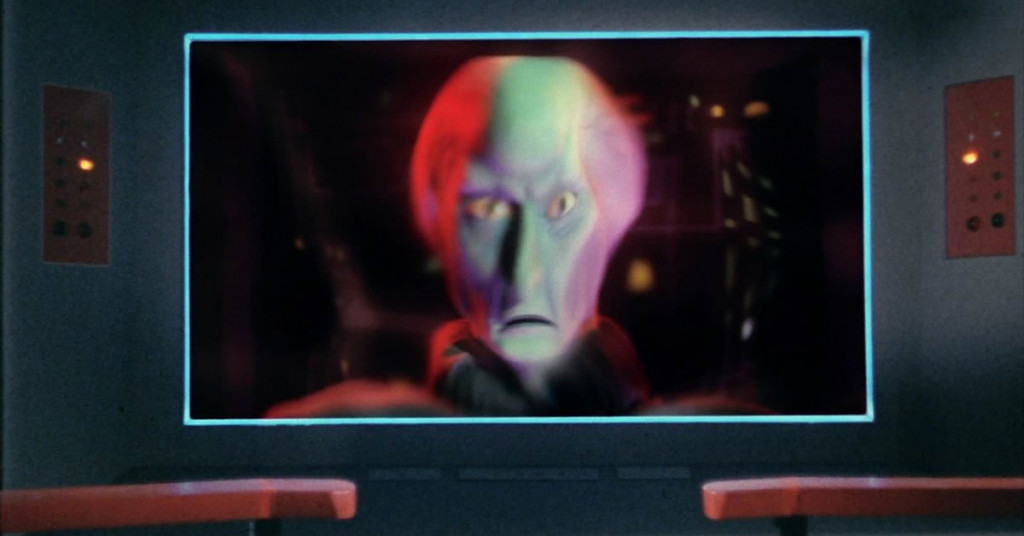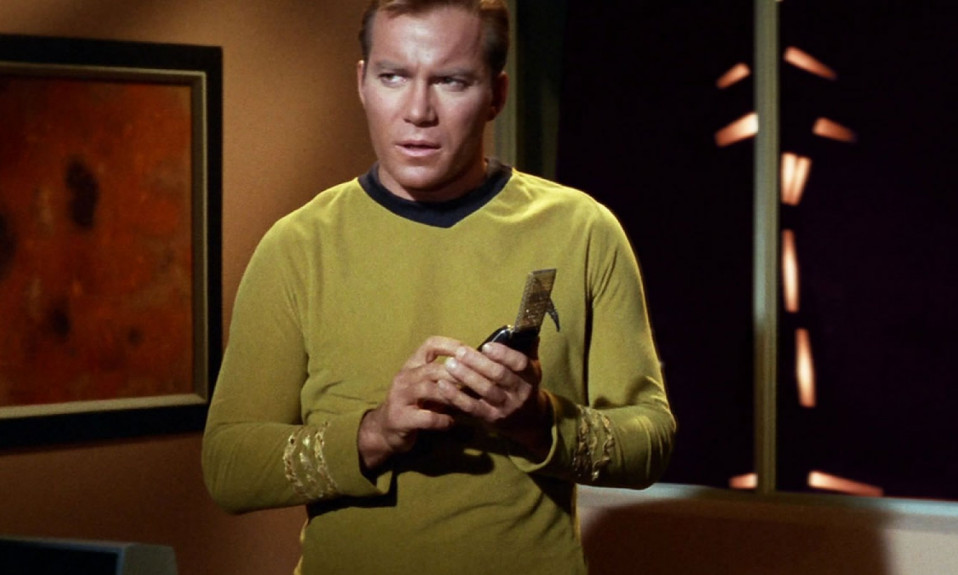Star Trek was first broadcast in 1966 and the real world was being revolutionised around them, the Space Race was in full swing, computers were increasingly being introduced into society and microwave ovens were just around the corner. Scientific progress was moving at leaps and bounds and the possibilities of what humankind could have in fifty or one hundred years were staggering. But as well as scientific discoveries influencing pop culture like Star Trek, many say that Star Trek influenced science. Many items that were once the wildest fantasies of Star Trek creator Gene Rodenberry are now commonplace.
Communicators
This is probably the most obvious example in all of Star Trek. Even in the Star Trek: The Original Series (ToS) the characters all had communicators, small portable devices that you flipped open and allowed you to talk to people at great distances, being very similar to mobile phones. In the early 60s phone calls from Western Europe and America had to be scheduled due to the lack of transatlantic cable. The ease with which Kirk contacted his colleagues would have seemed spectacular. In Star Trek: The Next Generation (TNG) communicators have been made even smaller, and instead of a handheld device, they are small items pinned to their clothes, mimicking (or predicting) the ever-smaller mobile phones.

The bridge of just about every starship is dominated by a large flat screen which they use to view information and communicate with people on other ships, much like video conferencing technology like Skype or Zoom. These conversations could be with nearby vessels or people on distant planets.
Computers

The characters in Star trek have regular conversations with their computers. Kirk could ask the Enterprise to tell him how long it would take to get to Vulcan and it would respond with an answer. Whilst not artificial intelligence the ship’s computer was able to easily understand the characters and give answers. Characters request music be played, directions given to a destination, and information on virtually any topic and the computer responds. Clearly, Alexa, Google Assistant and so on, were inspired by Star Trek even down to the manner these smart speakers talk which is very reminiscent of the computer on the Enterprise.
Replicators
One of the most impressive and useful pieces of technology demonstrated in all of Star Trek is the Replicator. A person approaches a replicator, asks for a sandwich, and a sandwich is created for them, seemingly out of thin air. And it wasn’t just food – seemingly there are few things that replicators cannot create. This is based on one of the cornerstones of Star Trek science, the ability to turn energy into matter and vice versa, in the example given the sandwich isn’t created from nothing, but by turning energy into matter. Some people have heralded 3D printers as replicators, a device that creates just about anything (even food) from a stored resource. But many a pedantic fan – including me – would find this comparison a bit generous to 3D printers.
Holodecks
The holodeck is a room on a starship where holographic worlds are created but made solid by the same energy-matter conversion technology behind replicators. The world can be populated by people, animals, giant robots, pretty much whatever you can imagine. Whilst virtual reality pre-dates Star trek coming up with holodecks the modern VR headsets seem very reminiscent of the holodecks.
Things Star Trek Didn’t Invent

Often the technology of Star Trek does exist in the real world already. Hyposprays are common medical equipment in Star Trek, effectively syringes but instead of piercing the skin with a needle the liquid is fired out at such a speed it pierces the skin, these were invented in the 1940s and are usually known as injector guns. Phasers are directed energy weapons and a variety of what we would call lasers, these were theorised in the early 20th Century and invented in the 1960s. In real-life lasers have numerous uses but not really as weapons, it does seem like some militaries have developed what could be called laser weapons but it is doubtful they could ever be deployed in actual combat. So sometimes Star Trek has taken an idea or a prototype and imagined a world where this technology was ubiquitous – phasers are not cutting-edge technology but standard equipment and driving the desire in real life for these things to be available.
It can be easy to get caught up in the idea of Star Trek having “invented” various pieces of technology. After all, George Orwell’s 1984 features two-way televisions where people on TV can see you and tell you to do more exercise. War of the Worlds features a heat ray which seems very similar to phasers/lasers. Star Trek is also famous for its almost meaningless technobabble, where scientific and things that sound plausibly scientific explanations are given for the things that happen. Star Trek is also perfectly happy to fly in the face of accepted science when the story demands it. Nevertheless, it is eerie watching Kirk and Spock with communicators in a show made in the 60s that anyone in 2022 would recognise as mobile phones.
Also Read: Five Star Trek Fan Films You Should Watch Right Now













